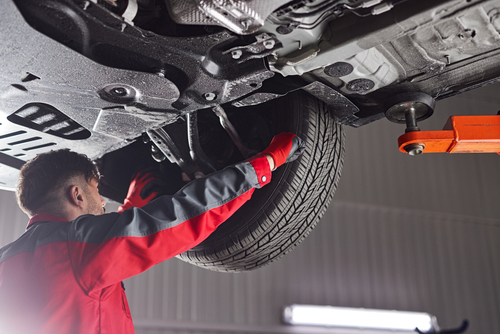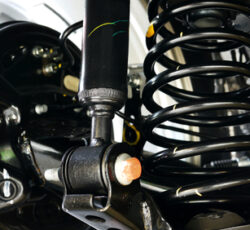The Importance of Steering and Suspension Repair

When it comes to vehicle maintenance, one crucial aspect that often goes overlooked is the steering and suspension system. Many drivers may not realize the significant role these components play in ensuring their safety and overall driving experience. In this blog, we will highlight the importance of steering and suspension repair, emphasizing the need to address any issues promptly.
Ensuring Stability and Control
A well-functioning steering and suspension system is vital for maintaining stability and control while driving. These components work together to keep the tires in contact with the road, allowing the driver to steer accurately and respond to road conditions effectively. If your vehicle’s steering feels loose, or if you experience difficulty in keeping it in a straight line, it may be an indication of a problem with your steering and suspension system. Ignoring these signs can compromise your ability to control the vehicle, increasing the risk of accidents.
Enhancing Ride Comfort
The steering and suspension system also play a significant role in providing a smooth and comfortable ride. A properly functioning suspension system absorbs shock from the road, minimizing the impact felt by the driver and passengers. If you notice excessive bouncing, uneven tire wear, or a rough ride, it could be an indication of suspension issues. Addressing these problems promptly through repair or replacement can greatly improve your driving experience, ensuring a comfortable ride for you and your passengers.
Preserving Tire Life
A faulty steering and suspension system can have a detrimental effect on your tires. Misaligned wheels and worn-out or damaged suspension components can cause uneven tire wear. This not only leads to a decrease in tire life but also affects your vehicle’s overall performance and fuel efficiency. Regular steering and suspension maintenance can help identify and rectify any alignment or suspension issues, preserving your tire investment and avoiding premature replacements.
Maintaining Proper Wheel Alignment
Proper wheel alignment is an integral part of steering and suspension repair. Correct alignment ensures that all four wheels are parallel to each other and perpendicular to the road surface. Misalignment can result in uneven tire wear, increased rolling resistance, and a decrease in fuel efficiency. It can also cause your vehicle to pull to one side or make steering feel heavy or difficult. Regular alignment checks and adjustments as part of steering and suspension repair will help maintain proper wheel alignment, optimizing tire performance and extending the lifespan of your tires.
Maximizing Safety
Safety should always be a top priority when it comes to vehicle maintenance. A faulty steering and suspension system can jeopardize your safety on the road. Issues such as excessive body roll, poor handling, or a loss of control can result in accidents or make it difficult to avoid hazardous situations. Regular steering and suspension inspections and repairs help identify and address potential safety concerns, ensuring that your vehicle operates at its optimum level of safety.
Ensuring Proper Functioning of Other Systems
The steering and suspension system interacts with various other components of your vehicle, including brakes, tires, and the overall chassis. A malfunctioning steering system can affect the performance of these interconnected systems, compromising their effectiveness and potentially leading to more significant problems. By keeping your steering and suspension in excellent condition through regular maintenance and repair, you can ensure the proper functioning of other critical vehicle systems, maximizing your safety and driving experience.
Summary
Don’t underestimate the importance of steering and suspension repair. It is crucial for maintaining stability, control, and ride comfort while preserving your tires and optimizing safety. By addressing any issues promptly and regularly maintaining these systems, you can enjoy a smoother, safer, and more enjoyable driving experience. Don’t compromise on your vehicle’s performance and your safety – prioritize steering and suspension repair to keep your vehicle operating at its best.

 Understanding the Different Types of Suspension Systems
Understanding the Different Types of Suspension Systems